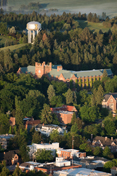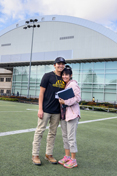35.33 - Human Resources & Safety Training
Owner:
- Position: Environmental Health and Safety Executive Director
- Email: safety@uidaho.edu
Last updated: October 07, 2024
A. Human Resources and Safety Training. Adequate protection and development of human resources are essential for the University to accomplish its purpose, functions and objectives [See FSH 1320].
A-1. Workplace Health and Safety. The president is charged with the responsibility and authority for maintaining order and providing for the safety and well-being of everyone who is admitted to, enrolled in, employed by, or associated with the UI.
a. Drug Free Work Areas. The UI strives to maintain an environment conducive to inquiry and learning which is free of illegal drugs and abuse of alcohol [See APM 05.32]. To maintain a safe and productive work environment, the UI expects support and cooperation from employees in implementation of this policy.
b. Workplace Supervision and Access.
i) Supervision. Supervisors, employees and students are responsible for ensuring that personnel within their workplace are adequately supervised. Students engaged in classroom and laboratory activities must be constantly monitored. Visitors, children and other personnel may not be aware of the hazards within a typical workplace and may require more careful supervision. Open and/or low sill windows, unprotected electrical outlets, tools, paper shredders, paper cutters, electric staplers, equipment that can cause severe burns (laminators, space heaters, etc.), heavy storage items, unsecured bookcases and cabinets, work tables and stools, and chemicals are examples of hazards that may be encountered by persons unfamiliar with a workplace. Persons on tours of UI facilities or those attending university events or workshops must be protected from workplace hazards.
ii) Access. Workplaces must be secured to prevent unauthorized entry when no one is present. Only authorized personnel are allowed in hazardous spaces such as laboratories, shops, mechanical rooms, roofs, and other areas. Children are not allowed in hazardous spaces except during university approved activities and must be under supervision of a responsible adult and, if in a group, must have previously obtained the written permission of a parent or guardian to participate in the activity.
c. Reporting Safety Concerns. Questions about workplace health and safety should be referred to the Environmental Health and Safety (EHS) Office. Additional information about specific safety procedures may found in the Administrative Procedures Manual. Any potentially hazardous situations and problems should be reported immediately to the Safety Officer.
A-2. Hiring and Safety Training. Ensuring employees are adequately trained and qualified for their assigned responsibilities not only reduces the risk of injury to persons or damage to university property, but also positively benefits the university by preventing the waste of the significant resources it takes to address the many indirect costs associated with accidents.
a. Supervisor Responsibilities. Deans, directors, department heads, and other supervisory personnel are responsible to ensure that each person reporting to them has the training and experience necessary to conduct assigned work activities in a safe and prudent manner. Employees must be furnished with appropriate safety equipment, devices, and safeguards and are required to adopt and use the practices, methods, operations, and processes that are provided to render the workplace safe.
i) Safety Orientation. Supervisors are responsible to ensure that each employee hired receives an employee safety orientation [See APM 35.77] as soon after hiring as possible. Such training includes documentation signed by both the supervisor and employee to verify that applicable safety policies and procedures have been reviewed prior to assigned work tasks. This documentation must be kept on file and must be accessible for review by the Safety Officer or authorized designee.
ii) Minimum Training Requirements. Supervisors are responsible for ensuring each employee receives necessary initial and continuing training to perform safely assigned work tasks [See APM 35.77]. (Contact EHS Office for availability of checklists and other training materials that may be used to conduct and document employee safety training as well as safe work practices.)
iii) Training Assistance. Upon request, EHS personnel will assist supervisors in ensuring that employees receive necessary safety training. For additional information on safety training issues and opportunities, contact the EHS Office, (208) 885-6524.
B. Reporting Accidents and Incidents. Every employee is required to report all accidents that result in personal injury or damage to university property to his or her supervisor as soon as possible. Incidents that do not actually result in damage to persons or property should also be reported to supervisors. Supervisors are responsible for ensuring that accidents and incidents brought to their attention are promptly reported, as required by appropriate accident reporting procedures [See APM 35.71 and/or APM 35.35].
C. Workplace Safety Inspections. UI safety personnel and regulatory agencies conduct inspections of UI building and campus areas and coordinate compliance with applicable federal, state, and local agencies and codes. [See APM 35.74] Reasonable access during these inspections must be provided. Supervisors are encouraged to ensure that safety inspections of workplaces are performed at least quarterly and to periodically review the practices and procedures being used when fieldwork or other work-related activities are performed in isolated areas to verify that related hazards are adequately acknowledged. Checklists that are used to document in-house workplace safety inspections may be obtained by contacting the EHS Office, (208) 885-6524.
Version History
Amended October 2024. Minor edit to update owner position title.






